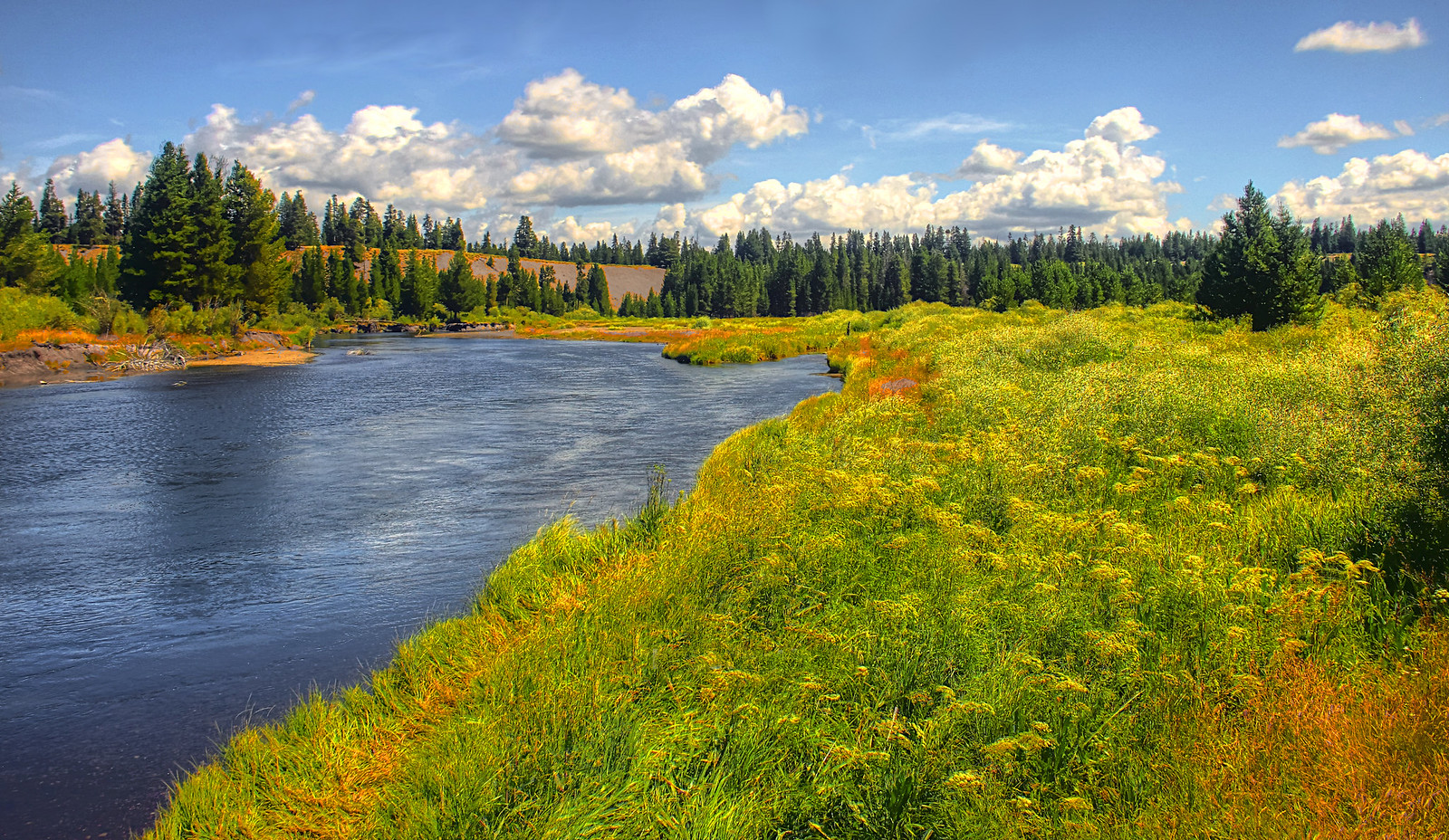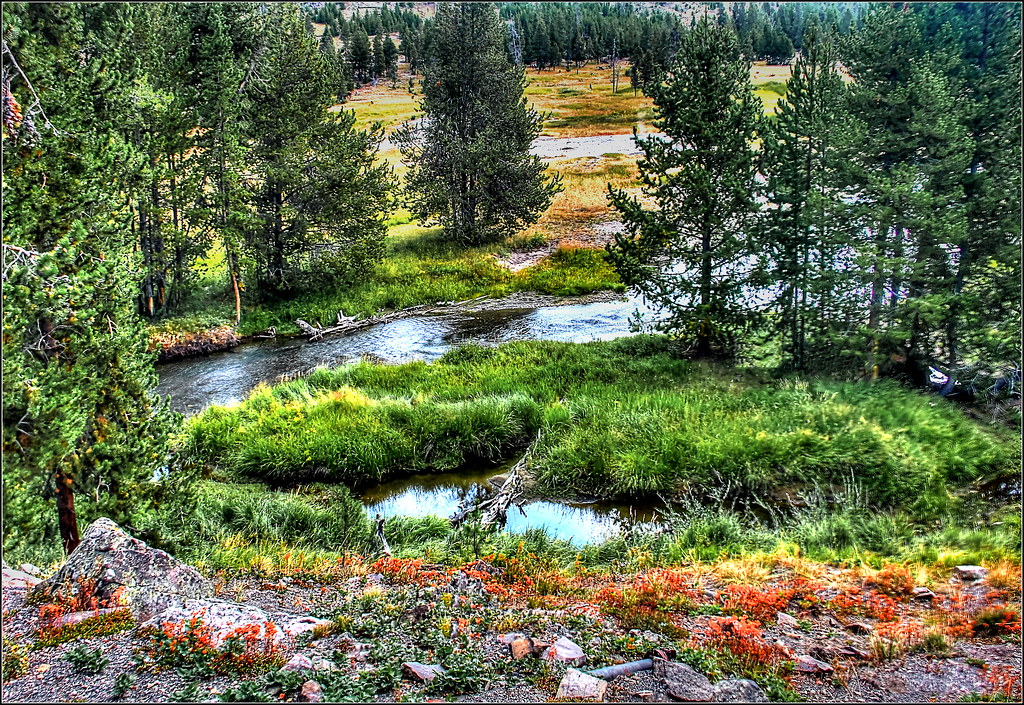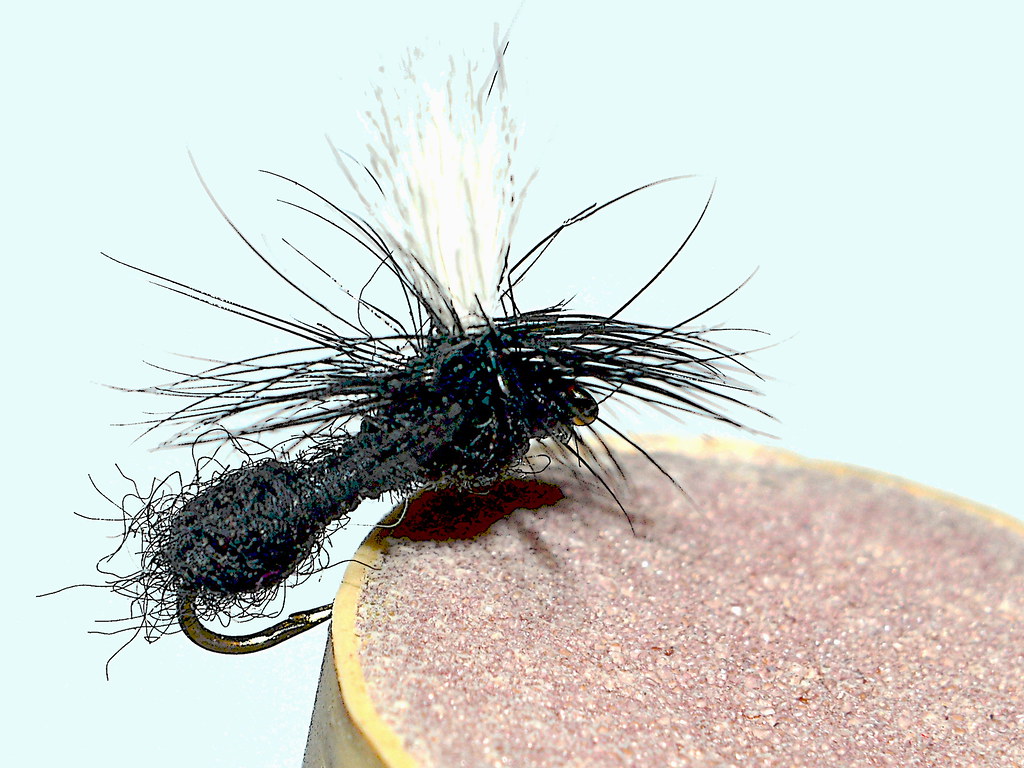PERCHED WATER TABLES
Cold Springs
sociable fish
 |
| WALLPAPER: SELDOM SEEN MADISON RIVER OASIS |
-------
.. It's a simple and obvious formula. Critters, (humans, as well as fish,) have a "MOST COMFORTABLE" temperature range... Outside of that range metabolism does it's best to compensate and reduce stress to survivable levels. Humans have the advantage here: clothing, (more or less,) location, (shade or sun, - wind or wind shadow,) technology, (dwellings, air conditioning, heating, etc.)
.. However, fish and humans have one thing in common: environmental mobility. Within (differing,) limits moving to more salubrious locations and conditions is often a first step in finding a temperature range that is desired.
.. Over the last few weeks the fish in the Madison River, (and other rivers,) have migrated to waters cool enough to allow their survival. Fisher folks, too.
.. Currently, the majority of the Madison River is running more than 100/cfs below it's median flow for the season. It is also spiking to 75 ° F and more for much of it's length in Yellowstone National Park.
.. These temperature and flow data prompt advice to leave the fish alone because of the near lethal temperatures and the possibility of stressing the fish to death in the battle to bring them to hand.
 |
| FIREHOLE RIVER ABOVE OLD FAITHFUL |
.. Leave the Madison River alone and fish in the cooler waters of the Gallatin River or the upper Firehole River in Yellowstone National Park's west side.
-----
.. The bedrock topography of the Madison River Valley in Yellowstone National Park still exerts a major controlling influence on the river's course and behavior. This is unlike the lowland river that primarily runs in clastic sediments and meanders it's way through glacial outwash sands and gravels... There are places, along the river in the park where the river channel is mere feet or inches above, or on the bedrock. Some of these places have groundwater discharge into the river from the perched water table. These places, and directly downstream from them, have water much, much cooler than the main body of the river.
 |
| GALLATIN RIVER AT FAWN PASS |
.. They are advised to study the water from a good way off before plunging in with wand in hand to do battle or dance with their friends or foes.
.. This is good advice - as far as it goes. It is sufficient for the typical fisher.
.. Just where the in the water column fish may likely be, can be estimated - in the most general of terms. Noses on the surface are also a good indicator.
.. Other factors are equally important and often overlooked. The stirring of the water column by winds is a seldom discussed factor in river observations - it's usually left for lakes and oceans - {think Hebgen Reservoir.}
.. Temperature stratification is also a point to consider. Speed and course of the streams within streams is far too esoteric for the Galahads of the wand to even think about let alone contemplate.
.. Perched water tables and subsurface cold springs seldom come up in discussions about where to find fish in a stream. But, they are very important indeed.
-----
.. Down a dusty, rutted, and mightily bumpy road that terminates next to a lonely picnic bench there is a lush oasis on the Madison River. Tourists of the rubberneck variety find this spot more often than do fishers... The vegetation is lush, the water is cool, the stream is placid and scenic. It defies traditional definitions as a "fishy place."
.. The river looks to be absolutely un-fishy. It is broad and shallow. The flow appears to be uniform across it's width. There are no deep pools. There is not much of an indication of riffles and runs. There are no boulders poking through the surface. Walk on by.
 |
| THE ANTS ARE ACTIVE |
.. The stream has forgotten it's meandering ways and runs very straight. It is disciplined by the underlying bedrock.
.. The ground surface indications are easy to spot if the eyes of a fisher wander from the water. The cold spring discharges, as well, can be mapped with a simple thermometer.
.. Just yesterday there were 50-yard segments of the stream where, just feet from the bank, the temperature was a full 14°F cooler than it was in the main body of water. The water was even 10°F cooler than the "Cold Core" of the stream - we checked.
.. Where do you suppose the fish were? Fingerlings nibbled at the thermometer. Dark shadows slowly drifted away. Splashes to rising caddis, (or what-not,) were frequent and not more than 10' feet from our pokings.
.. We backed off and looked for the fish. We moved to get a view of the bottom with the low sun and some small binoculars as aids. In places the gravels were obscured by the density of the torpedo-shaped shadows. Yes, the fish know where it is comfortable.
.. We trudged back, over the spongy ground, to the car and rigged up a little stick. We returned to the spot with a fly that we brutally truncated at the bend and fooled a couple of dozen fish. They were willing. They were not sluggish. They could have been brought to hand - but weren't.
.. By all means leave the Madison River alone until Fall.
-------
 |
| WALLPAPER: SELDOM SEEN FISHING TOOLS |
